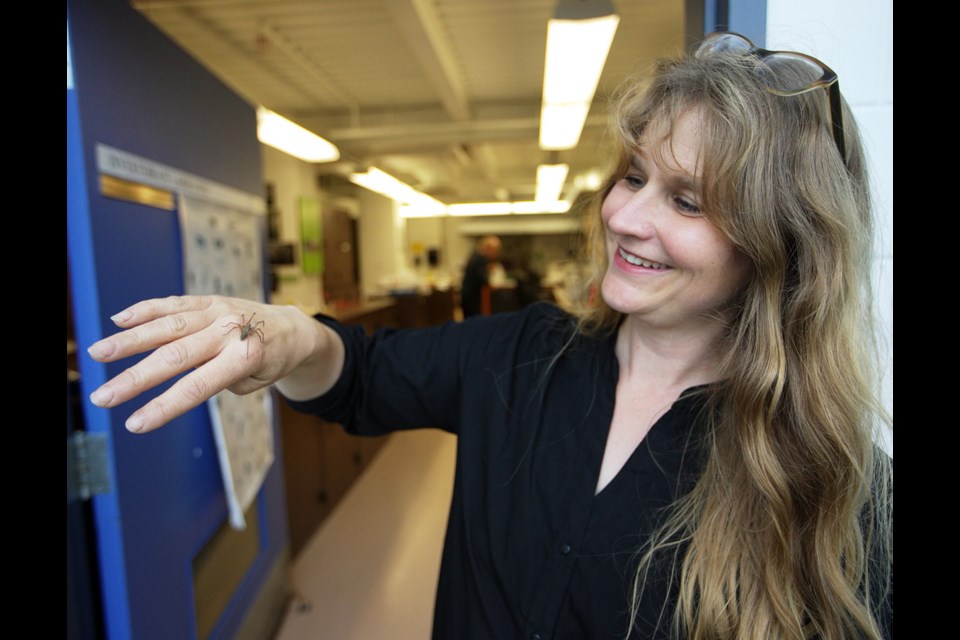With fall’s arrival, Victorians start to see their homes invaded by those enormous, scary spiders, the ones many of us call “wolf spiders.”
But Claudia Copley, entomology collection manager at the Royal B.C. Museum, takes umbrage on behalf of these eight-legged visitors, insisting they are not that enormous, nothing to be scared of and technically aren’t even wolf spiders.
“The fall season is when Victorians all start to freak out about these giant, hairy, house spiders they see coming in,” Copley said. “People always think of them as ‘wolf spiders,’ but they are actually three species introduced from Europe.”
The three species are:
• The giant house spider, Eratigena atrica, the biggest and most likely to spread fear.
• The hobo spider, Eratigena agrestis, the most unfortunately mislabelled because Copley said in “the Internet world of crazy” the word agrestis, Latin for “of grass,” became mis-translated to “aggressive”.
• The house spider, Tegenaria domestica, also called the barn funnel weaver.
Copley said all three appear similar. They are all harmless to people. They don’t sting, they can’t break a person’s skin and don’t carry any harmful bacteria.
“They are not aggressive and they don’t have a venom that is any danger to us,” Copley said.
“All of them can bite because they are animals with jaws, like a beetle or an ant,” she said. “But the bite doesn’t hurt, and I’ve never even been bitten.”
To demonstrate, she tips a live specimen of the hobo spider from a jar into her hands. She pins its struggling legs with fingers and thumbs and still manages to give the creature a little belly rub as it were a co-operative hamster.
“I’ve handled hundreds and hundreds of spiders,” she said. “It’s not dangerous.”
Copley said all three of the spiders that invade Victoria homes this time of year produce horizontal sheet webs on the ground. These small mats are often seen in backyard grass or in or under sheds. They also build funnel-shaped retreats into which they hustle any prey unlucky enough to be trapped in the sheet web.
But at this time of year, these spiders reach sexual maturity, and the males, in particular, fall victim to their own reproductive biology. They leave their little funnel homes and go looking for females, who don’t move. In their wanderings, the males will often slip inside a human abode.
“They are all just lost and they are all just looking for love,” Copley said. “They just find their way under our doors and they wander around and can’t find a mate until they die.”
Even the sexual organs of these males, two appendages on the sides of their heads, called pedipalps, work against them in their relations with people.
At this time of year, they swell up, become noticeable to the human eye and are misconstrued by the human brain as biting jaws. But in reality they are used to transfer sperm to a willing female.
Again, Copley said it’s unfortunate for the male spiders’ reputations among humans to have their “naughty bits” misidentified as fearsome weapons.
She said in another respect, the spiders are victims of West Coast humans’ relaxed attitudes to winter. Unlike Canadians everywhere else, the typical Victorian doesn’t work very hard to weatherproof the home. Even a simple sweep strip under a door will keep out most spiders.
“People in places away from the coast will do a better job of energy efficiency because they live in a colder climate,” Copley said. “We are pretty lazy here, so we end up with a lot of big spiders in the house.”
“We don’t do that little bit of energy-efficiency that we should.” she said. “We could be saving money and saving spiders if we would just put a sweep under the door.”



